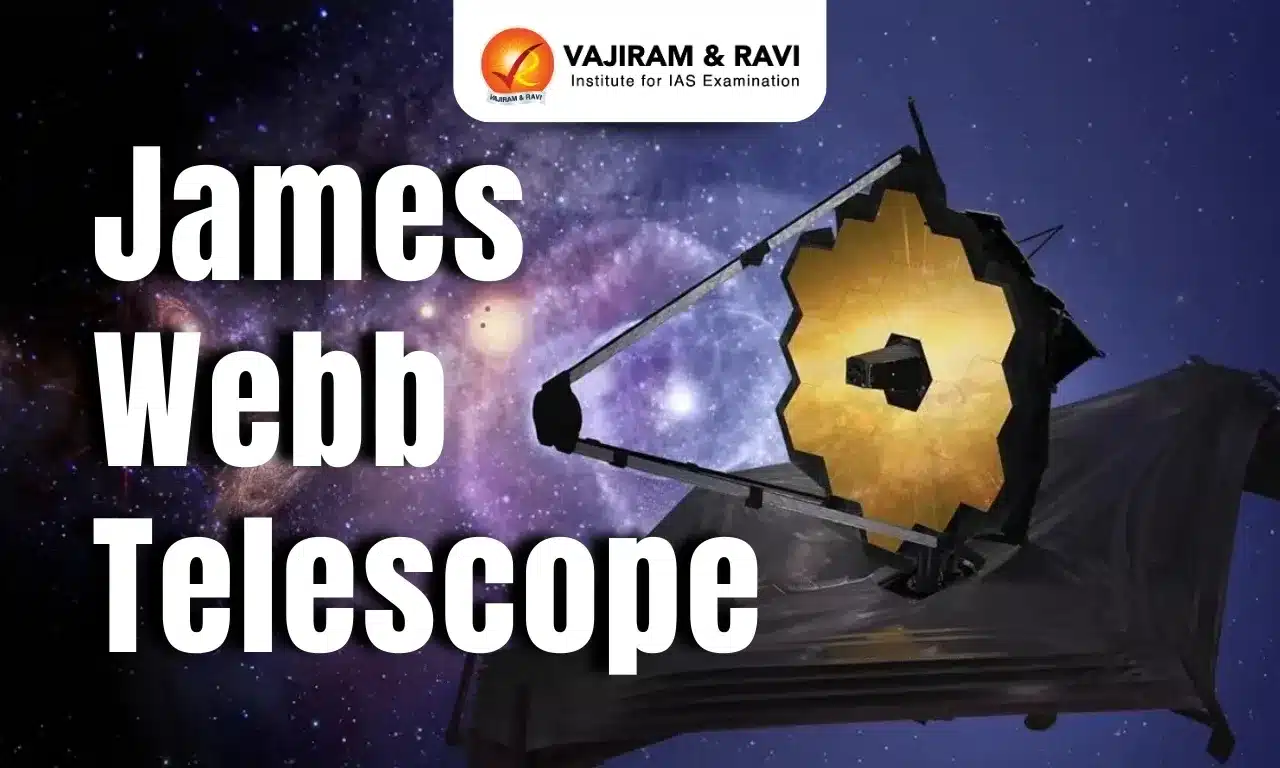James Webb Space Telescope (JWST) Latest News
Recently, scientists have found tentative but strong evidence of possible extraterrestrial life on a distant exoplanet named K2-18b, located 124 light years away from Earth in the Leo constellation.
About James Webb Space Telescope (JWST)
- The James Webb Space Telescope (JWST), launched in December 2021, is the largest and most powerful space observatory built through a collaboration between NASA, European Space Agency (ESA), and Canadian Space Agency (CSA).
- JWST orbits the L2 Lagrange Point, about 1.5 million km beyond Earth, enabling a stable position for deep-space observation.
- The telescope operates primarily in the infrared spectrum and is equipped with components such as:
- Optical Telescope Element (OTE) – collects light from distant objects.
- Integrated Science Instrument Module (ISIM) – houses all cameras and instruments.
- Sunshield – protects sensitive instruments from solar radiation.
- Spacecraft Bus – provides necessary operational support.
Scientific Findings on K2-18b
- The Cambridge University research team studied the planet’s atmosphere and detected chemical signatures of gases like dimethyl sulphide (DMS) and dimethyl disulphide (DMDS).
- On Earth, these gases are known to be produced only by marine phytoplankton and certain bacteria, raising the possibility of biological activity on K2-18b.
- The amount of DMS detected is thousands of times greater than Earth’s levels, suggesting, if biological, that the planet might be teeming with life.
Source: BBC
Last updated on July, 2025
→ UPSC Notification 2025 was released on 22nd January 2025.
→ UPSC Prelims Result 2025 is out now for the CSE held on 25 May 2025.
→ UPSC Prelims Question Paper 2025 and Unofficial Prelims Answer Key 2025 are available now.
→ UPSC Calendar 2026 is released on 15th May, 2025.
→ The UPSC Vacancy 2025 were released 1129, out of which 979 were for UPSC CSE and remaining 150 are for UPSC IFoS.
→ UPSC Mains 2025 will be conducted on 22nd August 2025.
→ UPSC Prelims 2026 will be conducted on 24th May, 2026 & UPSC Mains 2026 will be conducted on 21st August 2026.
→ The UPSC Selection Process is of 3 stages-Prelims, Mains and Interview.
→ UPSC Result 2024 is released with latest UPSC Marksheet 2024. Check Now!
→ UPSC Toppers List 2024 is released now. Shakti Dubey is UPSC AIR 1 2024 Topper.
→ Also check Best IAS Coaching in Delhi
James Webb Space Telescope (JWST) FAQs
Q1. What is the James Webb Space Telescope (JWST)?+
Q2. How is JWST different from the Hubble Telescope?+
Q3. What scientific goals does JWST serve?+
Tags: James Webb Space Telescop Prelims Pointers upsc prelims current affairs














